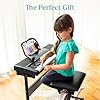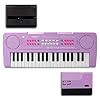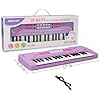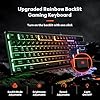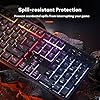Table of Contents
Introduction to Piano Learning and Composition
Learning to play the piano is a rewarding journey that enhances coordination, emotion expression, and mental acuity. When combining this skill with the art of composition, it elevates the experience, enabling one to not only perform music but also to create original pieces. This introduction focuses on the synergistic approach to learning piano with a goal of becoming a proficient composer, highlighting critical skills and strategies that help meld the dual arts of performance and composition.
Understanding Basic Music Theory
Before you can start composing, it’s crucial to have a solid understanding of music theory. Start with learning the basics such as scales, chords, and chord progressions. The major and minor scales are the foundation of most piano compositions. Understand how chords are constructed from these scales and how they move or “progress” from one to another to form a harmonious sound.
Best Choice Products 61-Key Electronic Keyboard Piano Portable Electric Keyboard Complete Beginner Set w/LED Screen, Stand, Bench, Headphones - Black
13% OffRockJam 61 Key Keyboard Piano Stand With Pitch Bend Kit, Piano Bench, Headphones, Simply Piano App & Keynote Stickers
$129.99 (as of December 20, 2025 13:23 GMT -08:00 - More infoProduct prices and availability are accurate as of the date/time indicated and are subject to change. Any price and availability information displayed on [relevant Amazon Site(s), as applicable] at the time of purchase will apply to the purchase of this product.)Piano Star
$0.00 (as of December 20, 2025 13:23 GMT -08:00 - More infoProduct prices and availability are accurate as of the date/time indicated and are subject to change. Any price and availability information displayed on [relevant Amazon Site(s), as applicable] at the time of purchase will apply to the purchase of this product.)Keyboard Piano for Kids, BIGFUN 37 Keys Toddler Piano Multifunction Music Educational Instrument Toy, Electronic Kids Keyboard for 3-7 Year Old Girls and Boys (Purple)
15% OffExploring Melody and Harmony
Once you have a good grip on music theory, begin to explore creating melodies. A melody is a sequence of notes that are perceived as a single entity. Start simple by using the notes within a specific scale. Experiment with different rhythmic patterns and lengths of notes to see how they affect the feeling of the melody. For harmony, practice by adding chords to support your melody. This could be as simple as playing a single chord per measure or something more complex like a broken chord pattern.
Rhythmic Patterns and Structural Form
Rhythm is what gives life to your melody and harmony. Understanding and applying different rhythmic patterns can greatly enhance your piano composition. Learn about different time signatures such as 4/4, 3/4, and 6/8, and how they influence the overall feel of the piece. Additionally, structuring your composition is essential. Common forms include binary (AB), ternary (ABA), and rondo (ABACA). These forms help provide a roadmap for your composition, guiding the listener through a musical journey.
Experimentation and Creativity
The true essence of composing is found in experimentation and creativity. Don’t be afraid to break away from traditional norms in music composition. Try unconventional chord progressions, rhythmic patterns, or melodic structures. The more you experiment, the more you’ll find your unique style and voice in the music. Use improvisation as a tool to discover new ideas and inspirations.
Inspiration and Influence
Listening to a wide range of music can significantly influence and inspire your composing. Pay attention to how different genres and composers approach melody, harmony, and form. Try to incorporate some of these ideas into your own compositions to see what works for you. Also, consider the emotional and narrative aspects of music—what story are you trying to tell with your composition, and how can the elements of music help you tell that story?
Logitech MK270 Wireless Keyboard and Mouse Combo for Windows, 2.4 GHz, 8 Multimedia Keys, PC, Laptop, Wireless Keyboard Compact Mouse Combo - Black
23% OffRedragon K521 Upgrade Rainbow LED Gaming Keyboard, 104 Keys Wired Mechanical Feeling Keyboard with Multimedia Keys, One-Touch Backlit, Anti-Ghosting, Compatible with PC, Mac, PS4/5, Xbox
20% OffLogitech K270 Wireless Keyboard for Windows, 2.4 GHz Wireless, Full-Size, Number Pad, 8 Multimedia Keys, 2-Year Battery Life, Compatible with PC, Laptop, Black
33% OffEPOMAKER x Aula F75 Gasket Mechanical Keyboard, 75% Wireless Hot Swappable Gaming Keyboard with Five-Layer Padding&Knob, Bluetooth/2.4GHz/USB-C, RGB (Light Blue, LEOBOG Reaper Switch)
13% OffFeedback and Revision
Feedback is a crucial part of the composition process. Share your pieces with teachers, peers, or online communities to get different perspectives. Be open to criticism and use it to refine your work. Revising your compositions based on feedback can help you improve not just a single piece, but your overall approach to composing music.
Understanding Song Structure and Form
Mastering song structure is crucial when learning piano with a focus on composition. Song structure, or form, refers to how music is organized and arranged in sections. Understanding common structures can enhance your ability to compose in an organized and effective way.
Songs typically follow certain patterns that dictate the order in which different sections or themes are presented. Some of the most common structures are:
When you begin composing on the piano, consider these structures as frameworks that can be customized.
As you become more familiar with these structures, try incorporating them into your daily piano practice:
By deeply understanding and actively using these song structures, you’ll enhance your ability to compose music that is both innovative and appealing, leveraging your piano skills to their fullest potential.
Experimenting with Melodies
When learning piano with a focus on composing, experimenting with melodies is crucial. You can start by playing simple scales and observe how different notes interact with each other. Begin to form small melodic lines by altering the rhythm and sequence of these scales. Creating themes by utilizing motifs or short melodic fragments can serve as the foundation of your piece.
Utilize variations by changing the melody’s rhythm, mode, or even by transposing it to a different key. This opens up new emotional contexts within the same thematic material. To advance your explorations, integrate dynamics and expressive techniques, such as legato or staccato, to bring more life and feeling into your melodies.
Experimenting with Chords
Understanding and applying chords is a fundamental element in music composition. Start with learning the basic major and minor triads, then progress to more complex structures like seventh chords and extended chords. Familiarize yourself with chord progressions that are commonly used in various genres of music.
Experiment by changing the bass notes of chord progressions to see how they alter the feeling of the music. You can also try inversions, where the order of the notes in the chord is rearranged to create different sounds and textures. Practice voice leading, the technique of writing smooth transitions from one chord to the next, to maintain a cohesive sound throughout your composition.
Another area to explore is the use of suspended or added tone chords, which can provide a sense of tension and release in your music, essential for expressive compositions. Combining these elements thoughtfully will help create a harmonic background that can enhance your melodic ideas.
How to Notate Your Compositions
When learning piano with a focus on composition, it is crucial to understand how to effectively notate your musical ideas. Below are key steps and considerations for notating your compositions:
While traditional pen and paper work well, musical notation software can simplify the process and offer greater flexibility and accuracy. Popular choices include Finale, Sibelius, and MuseScore, which cater to different levels of proficiency and budget requirements.
Before notating, ensure you have a good grasp of fundamental music theory, including key signatures, time signatures, and note values. This knowledge is crucial for accurately representing the musical ideas you wish to express.
Begin by sketching out your composition idea with simple melodies and harmonies. Use a piano roll or staff paper to jot down your thoughts before formalizing them in your chosen notation software.
Input notes by selecting the correct note value and placing it on the appropriate line or space on the staff. Do not forget to include rests, which are vital for the rhythmic accuracy of your composition.
Dynamics (such as pianissimo or fortissimo) and articulations (like staccato or legato) are essential for conveying the expressive qualities of your piece. Ensure these are clearly marked to guide performers on how to interpret your work.
At the beginning of your piece, and wherever changes occur, notate the tempo and mood. Expressions like ‘Allegro’ (fast) or ‘Adagio’ (slow) set the piece’s pace, while mood markings like ‘con brio’ (with vigor) or ‘dolce’ (sweetly) hint at the emotional tone.
After completing your initial draft, review your work to correct any errors and improve notation clarity. This might involve adjusting stem directions, note spacing, and aligning dynamics correctly.
As a final step, proofread your score with the performer in mind. Check for readability, and ensure all instructions are clear and actionable. If possible, have a fellow musician play through your piece to catch any potential issues.
Sharing and Performing Your Original Music
Once you’ve honed your piano and composition skills, sharing and performing your original music can be both rewarding and challenging. Here are several ways you can bring your compositions to the audience:
Recording is a powerful tool for composers. It not only allows you to share your music with people far and wide but also helps you critically listen to your own work. Use quality recording equipment to capture the nuances of your piano compositions. Today, home studios can be set up with relatively affordable equipment. Additionally, software like Logic Pro X, Pro Tools, or Ableton Live can aid in producing high-quality recordings of your work.
Social media is a great way to share your music and reach an audience without geographical limits. Platforms like YouTube, SoundCloud, and Bandcamp allow musicians to upload their recordings for free. For a more targeted approach, consider Instagram and Facebook, where you can share shorter clips of your performances and compositions. Engage regularly with your followers by responding to comments and sharing updates about your music journey.
Performing live is a traditional and effective way of sharing your music. Start by playing at local venues such as cafes, bars, or community centers. Networking with other musicians and joining local music groups or clubs can also provide opportunities for performances. For larger audiences, consider organizing a recital or a concert. As you grow, you might want to explore opportunities for performing at festivals or music competitions.
Collaborating with other artists can expand your musical reach and add a new dimension to your compositions. Look for vocalists, instrumentalists, or even other composers who can add a different flavor to your music. Collaborations can result in joint performances, recordings, and even co-written pieces which can introduce your work to entirely new audiences.
Getting featured in music blogs and online publications can significantly boost your visibility. Research bloggers who cover your genre of music and reach out with a well-crafted pitch, including links to your recordings. Personal stories and challenges you overcame during your learning and composition process can make your pitch more engaging and relatable.
Conclusion
Learning piano with an emphasis on composition is a rewarding journey that enhances both technical skills and creative talents. By establishing a solid foundation in piano fundamentals, engaging with musical theory, and dedicating time to practice, students can effectively develop their abilities to compose music. Utilizing technology and feedback serves as a significant aid in this process. Ultimately, persistent effort, coupled with a passion for exploring diverse musical styles, will unlock a student’s potential to not only play but also create music that is both expressive and unique.





